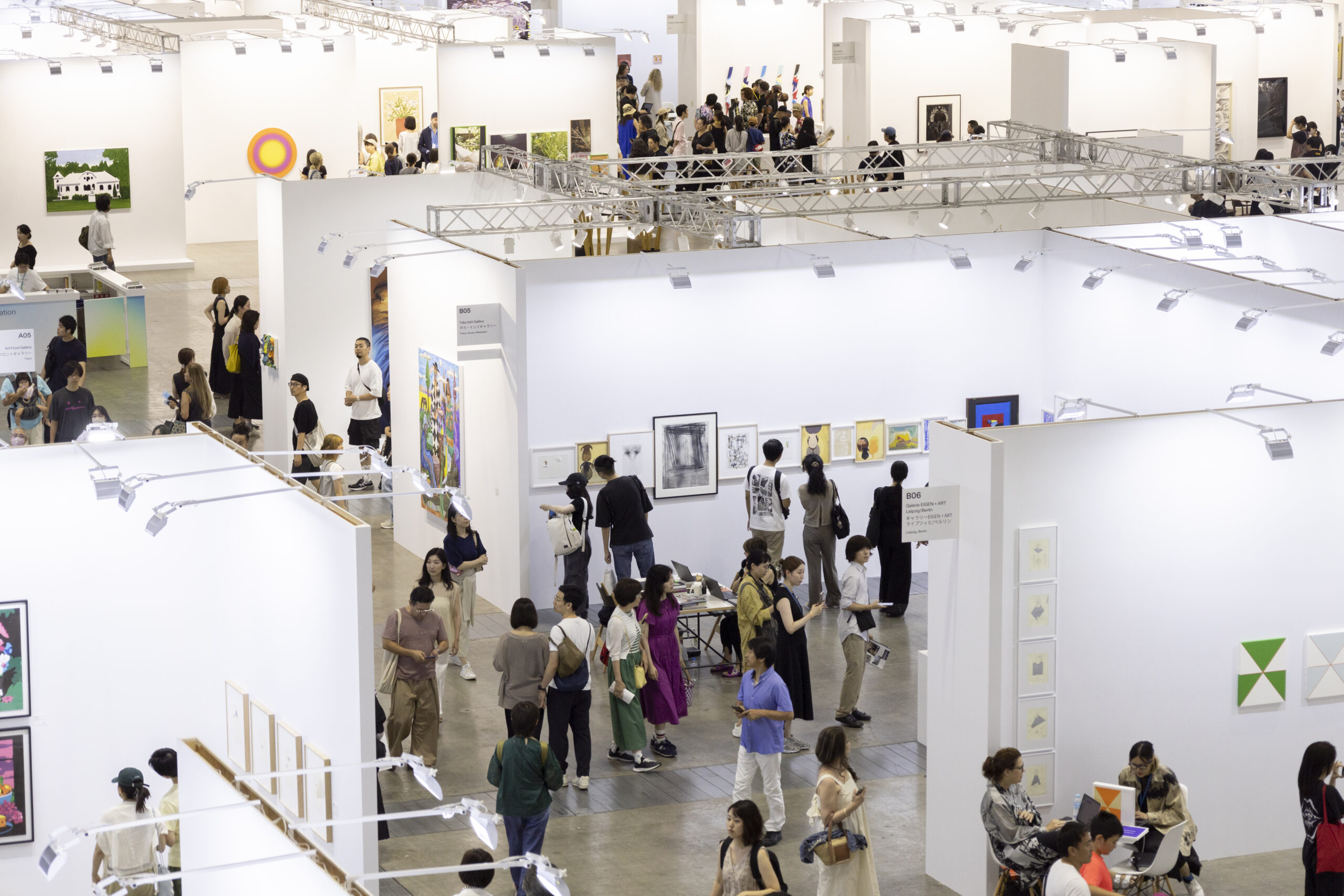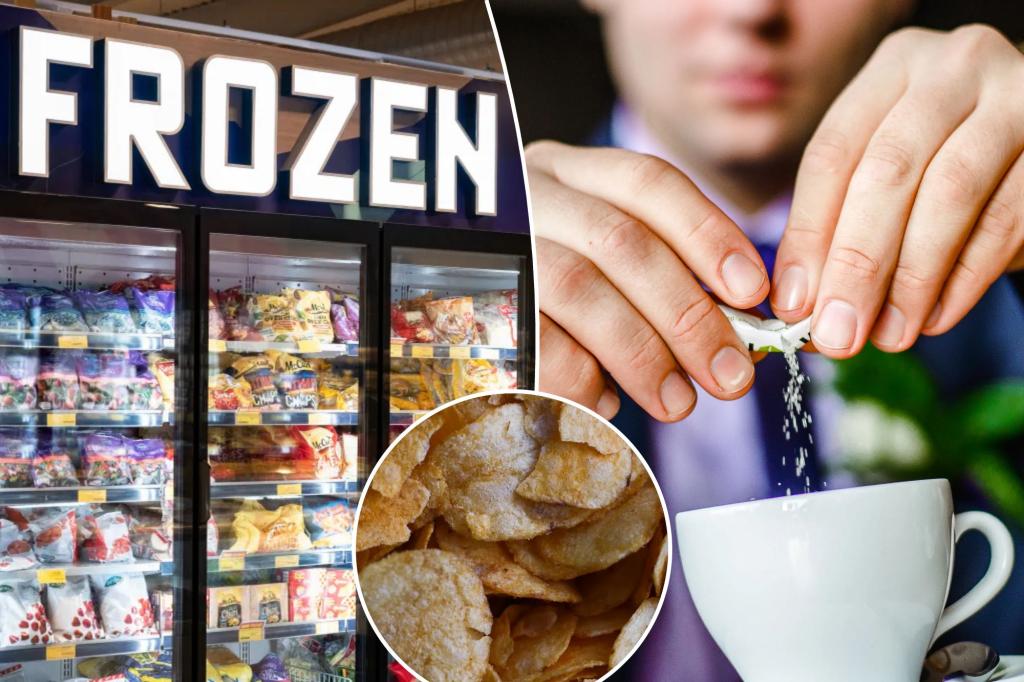
At the beginning of this year, a new report revealed that the Japanese art market is one of the fastest-growing in the world, with growth reaching an impressive 11 percent since 2019—far outpacing the global average of just 1 percent. Commissioned by Japan’s Agency for Cultural Affairs and authored by renowned art economist Dr. Clare McAndrew—best known for her work on the industry-defining Art Basel and UBS report—the survey and its findings were part of a broader effort, combining both government and private initiatives to reignite international attention on Japan’s art scene.
These figures should come as no surprise. Japan is one of the world’s leading economies and, in recent years, one of the most stable. “Especially over the past few years—from 2019 to 2023—the Japanese art market has shown remarkably strong growth,” Eri Takane, director of Tokyo Gendai, told Observer ahead of the fair’s opening. For Takane, that momentum is visible in the arrival of major international galleries opening in Tokyo, including Pace and the French gallery Ceysson & Bénétière, both of which launched new spaces in the Ginza district last year. “It’s exciting to see these galleries coming to Tokyo—not just to expand commercially but to challenge themselves, explore something new and build relationships with a younger generation of Japanese collectors, which I believe is growing in confidence and curiosity.”
Japan is set to become the fifth-largest economy in nominal GDP by the end of 2025. While recent fiscal policies have begun to rein in government bond spending—contributing to a weakened bond market—wage growth remains strong with base-pay increases of around 3.5 percent expected in 2025. This has helped sustain private consumption. Inflation is largely under control, and a recent tariff agreement with the U.S. has helped reduce trade uncertainty, particularly in the automotive sector, further boosting business sentiment, domestic optimism and consumer confidence—a promising climate for the art market to continue its upward trajectory.
At the same time, Japan has seen a sustained tourism boom following the pandemic and the full resumption of international travel, making 2025 a record-breaking year. In just the first half of the year, the country welcomed 21.5 million international visitors, reaching that milestone faster than ever and surpassing the 2024 total by mid-year. Japan is now on track to easily exceed the 36.9 million visitors recorded last year, with analysts projecting more than 40 million arrivals by the end of 2025. Total tourist spending is expected to top ¥10 trillion (around $69 billion), making tourism Japan’s second-largest export sector, behind automobiles and ahead of electronics components—both of which now face growing tariff pressures.


Today, Japan remains the second-largest art market in Asia. “Especially over the past few years—from 2019 to 2023—the Japanese art market has shown remarkably strong growth,” explains Takane. That momentum is evident in the arrival of major international galleries setting up shop in Tokyo, including Pace and the French gallery Ceysson & Bénétière, both of which recently opened new spaces in the Ginza district. “It’s exciting to see these galleries coming to Tokyo, not just to expand commercially but also to challenge themselves, explore something new and build relationships with a younger generation of Japanese collectors, which I believe is growing in confidence and curiosity.”
Meanwhile, Japan’s share of the global art market remains a modest 5 percent, but its art scene—particularly in the post-pandemic years—has begun to open up and embrace a more international outlook. A key turning point came with the 2021 tax reform that eased restrictions on artworks sold or exhibited through free port zones. By eliminating millions in duties and taxes, the reform made it significantly more feasible for international galleries to participate in Japanese art fairs. It also proved pivotal to the launch of Tokyo Gendai in 2023.
Since its inception, Takane has envisioned the fair as a platform that brings collectors, sponsors, charities and the general public together while offering the infrastructure for meaningful exchange. Set to return this year to Pacifico Yokohama from September 12 to 14, the fair will host sixty-seven galleries, evenly split 50/50 between Japanese and international participants. “It’s a powerful balance and a great opportunity for both sides to exchange ideas, build new relationships and start conversations that might lead to future collaborations,” says Takane. “Who knows, maybe five or ten years from now, we’ll see new joint exhibitions or projects that trace their roots back to this moment. It feels like we’re building something for the future.” Notably, the fair has shifted its dates from July to September, positioning itself just after Seoul Art Week. “With our new autumn dates, we are starting a new chapter and welcoming the cultural season in Japan,” explained Takane. “We are thrilled to collaborate closely with institutions, festivals and fairs across Japan and the wider region to show visitors the breadth and dynamism of Japan’s contemporary art scene.”
Among the returning exhibitors at Tokyo Gendai are established international names like Pace Gallery, Sadie Coles HQ and Ceysson & Bénétière, alongside leading Japanese galleries such as Taka Ishii Gallery, Kotaro Nukaga, Kai Kai Kiki and SCAI The Bathhouse. A Lighthouse called Kanata will present a curated showcase of works by contemporary sculptors and painters whose visual language is rooted in Japanese artistic traditions, while ShugoArts (Tokyo) is preparing a group presentation of work by leading Japanese women artists, including Leiko Ikemura, Aki Kondo and Ritsue Mishima.
Almine Rech will also return with a booth exploring the dialogue between poetry, abstraction and conceptual form with works by Larry Poons, Mehdi Ghadyanloo, Dylan Kraus and John Giorno. From Germany, Galerie EIGEN+ART will present a focused pairing of Carsten Nicolai and Stefan Guggisberg. Meanwhile, Korean powerhouse Johyun Gallery will stage a group exhibition combining the work of Japanese Mono-ha artist Kishio Suga with Korean artists Ahn Jisan, Kim Chong Hak, Kim Taek Sang and Lee Bae. Participating for the first time, Galerie Eva Presenhuber will showcase some of the most in-demand artists from its roster, including Joe Bradley, Sam Falls, Chase Hall, Shara Hughes, Ugo Rondinone, Tschabalala Self and Steven Shearer—a clear signal that the seasoned Swiss dealer sees strong potential in the Japanese collector base.


In recent years—particularly since the pandemic—Tokyo has witnessed a compelling wave of new galleries emerging across the city: young dealers, fresh spaces and dynamic programs focused on championing local creative talent and fostering dialogue with international artists and audiences. Some rising voices—like PARCEL, CON_ and ANOMALY—will be featured in the fair’s Hana (“Flower”) section, dedicated to solo presentations that spotlight emerging talents and overlooked mid-career artists ripe for rediscovery. “There’s a definite generational shift happening, and we want to make sure Tokyo Gendai serves as a platform to showcase that energy,” explains Takane. Notably, the more accessible Hana sector has drawn increased interest from international galleries this year, including BANK (Shanghai/New York), Boccanera Gallery (Italy), the experimental No Man’s Art Gallery (Amsterdam) and the dynamic Nigerian space Retro Africa.
To support Japan’s increasingly vibrant ecosystem of emerging galleries—as well as international ones taking a chance on the Japanese market—Takane is especially proud to introduce the new Hana Artist Award. This year marks its inaugural edition, with the most outstanding presentation in the Hana sector receiving a $10,000 cash prize and special recognition at the fair. The winner will be selected by a prestigious international jury that includes Miwako Tezuka, director of the soon-to-open Dib Bangkok and Kenjiro Hosaka from the Shiga Prefecture Museum. “This initiative is really about motivating the younger generation—not just emerging artists but also younger gallerists,” explains Takane. “We wanted to create something that looks forward, energizes them and gives a sense of future possibility.”
Also returning this year is the curated exhibition space Tsubomi (“Flower Bud”), dedicated to showcasing artists who are underrepresented or not currently represented by galleries. This year’s presentation highlights the work of Japanese women artists employing traditional craft techniques and the significance of artisanal practices in contemporary art discourse. The show creates a resonant dialogue between the poetic ceramics of Namika Nakai (Taro Nasu), the delicate glasswork of Ritsue Mishima (ShugoArts) and the lacquer sculptures of Chie Aoki (Sokyo Gallery).
Japanese crafts have long been passed down through generations of master artisans, yet women practitioners have historically received less recognition, explains Takane. The intention of the exhibition is to spotlight how these traditional techniques are being carried forward, revived and reimagined through contemporary practices—and in doing so, introduced to new global audiences. Notably, the presentation was curated by Takane herself in collaboration with Mari Hashimoto, cultural manager, curatorial producer and director of the preparatory office for the Kankitsuzan Museum of the Enoura Observatory, founded by Hiroshi Sugimoto and slated to open in 2027. “From the beginning, I’ve wanted Tsubomi to serve as a platform that amplifies local and international voices,” Takane explains. “I’m proud that this year we’re able to focus on a dialogue between craft heritage and contemporary Japanese art.”
Further enriching the fair’s curatorial and institutional scope, the Sato “Meadow” program returns this year, offering a curated selection of large-scale site-specific installations and performances woven throughout the booths. Highlights include The Steel Bar and the Pictorial Memory of the Gesture, a monumental work by French artist Bernar Venet (Ceysson & Bénétière) and a dual presentation of pieces by Takuro Kuwata and Dan McCarthy (Kosaku Kanechika). Meanwhile, the Ne (“Root”) section will host special showcases by leading Japanese art foundations, including the Obayashi Foundation, Fukutake Foundation, Odawara Foundation and Cadan: Contemporary Art Dealers Association Nippon.


Continuing its mission to catalyze Tokyo’s broader art ecosystem, Tokyo Gendai will once again present a robust schedule of events, institutional partnerships and collection visits. “We want to create opportunities for people to discover something new. Japan already has incredible venues and museums,” explains Takane.
While the city’s public and private museums are prepared to stage their best exhibitions to coincide with the fair, Tokyo Gendai has also partnered this year with the National Art Center to present a special collaboration with M+ in Hong Kong. The resulting exhibition, Prism of the Real: Making Art in Japan 1989-2010, explores art that emerged in Japan during those transformative decades and its influence on the international stage—tracing both its history and trajectories. Meanwhile, leading private museums are also contributing to the cultural landscape: Artizon Museum is hosting a focused exhibition on First Nation Australian women artists, while the Mori Art Museum spotlights the architectural genius of Sou Fujimoto. “There’s this amazing overlap of major institutional activity all happening around the same time, which enhances the energy of the week.”
The fair continues to receive strong support from SMBC, one of Japan’s largest banks and a lead partner for the third year running. “They’ve been very proactive about activating their own networks within the art community and supporting the broader market,” says Takane, noting that major corporations increasingly recognize contemporary art as a way to engage and energize communities across Japan.
A new partnership with Art Busan has also unlocked Korean government funding, enabling the participation of 10 Korean galleries in this year’s edition. But the collaboration extends well beyond the fairgrounds. As Takane notes, Art Busan is also organizing a special exhibition at Terada Art Complex, the vibrant Tennozu Isle hub that houses more than twenty galleries and remains a longtime partner of Tokyo Gendai. In addition, the fair has teamed up with Meta Media, which owns ArtReview and Art Journal, to increase participation from Chinese collectors. “All these partnerships create a broader cultural exchange, and we’re expecting many international guests to join us for it,” remarks Takane.
Last but not least, as part of the fair’s commitment to nurturing the local art scene and providing a platform for the broader community, Tokyo Gendai will launch its first curatorial symposium this year at Spark Shiseido, located just a ten-minute walk from the fair. The gathering will bring together twenty to thirty curators from Japan and abroad. “The goal is to give them space for networking, dialogue and discovery—and to introduce them directly to the artists, galleries and institutions connected to the fair,” the director explains.


The VIP program that the fair is assembling this year is designed to encourage visitors to explore beyond Tokyo and experience other parts of Japan. Most notably, Tokyo Gendai coincides with the opening of Aichi Triennale 2025, one of the most historic and respected biennials in Japan and across the region. Titled A Time Between Ashes and Roses, this sixth edition will be held under the artistic direction of Hoor Al Qasimi, President and Director of the Sharjah Art Foundation. Thanks to this collaboration, Tokyo Gendai VIP guests will continue their journey after the fair to preview the Triennale during its inaugural days.
Additional special trips included in Tokyo Gendai’s VIP programming will take guests to the Setouchi region, home to the destination-making Benesse Art Sites on Naoshima and Teshima Islands and the newly opened Rabbit Hole in Okayama. Other tours will travel to Nara Prefecture and Nasushiobara in Tochigi Prefecture, where guests will explore N’s YARD, a contemporary art space dedicated to the work of celebrated artist Yoshitomo Nara and visit the Kishio Suga Souko Museum, which houses both small- and large-scale works by Kishio Suga, a leading figure of the iconic Mono-ha movement. A specially curated visit to Kyoto will offer a deeper look into Japan’s enduring legacy of artistic expression. “Through these excursions, we’re trying to introduce visitors to the wider landscape of Japanese culture and art beyond what’s on view in Tokyo,” explains Takane.
Meanwhile, the fair is also continuing its public talks and education programs designed to welcome not only collectors and VIPs but also members of the general public. “We want Tokyo Gendai to be a space where everyone, regardless of background, can come together, learn and engage with art. That openness and accessibility are central to what we’re building,” remarks Takane.
When asked what remains a key priority for her in leading this third edition and shaping the fair’s future, Takane once again emphasizes her desire to build a bridge between Japanese audiences and the international art community. “I see Tokyo Gendai as a platform for dialogue, where people from all over the world can come together, connect and exchange ideas,” she says. “I hope the fair can become a true hub where everyone—artists, institutions, collectors, curators, the public—can gather, interact and create something meaningful together.”
Tokyo Gendai runs to Pacifico Yokohama from September 11 to September 14, 2025.
More in art fairs, biennials and triennials
<




